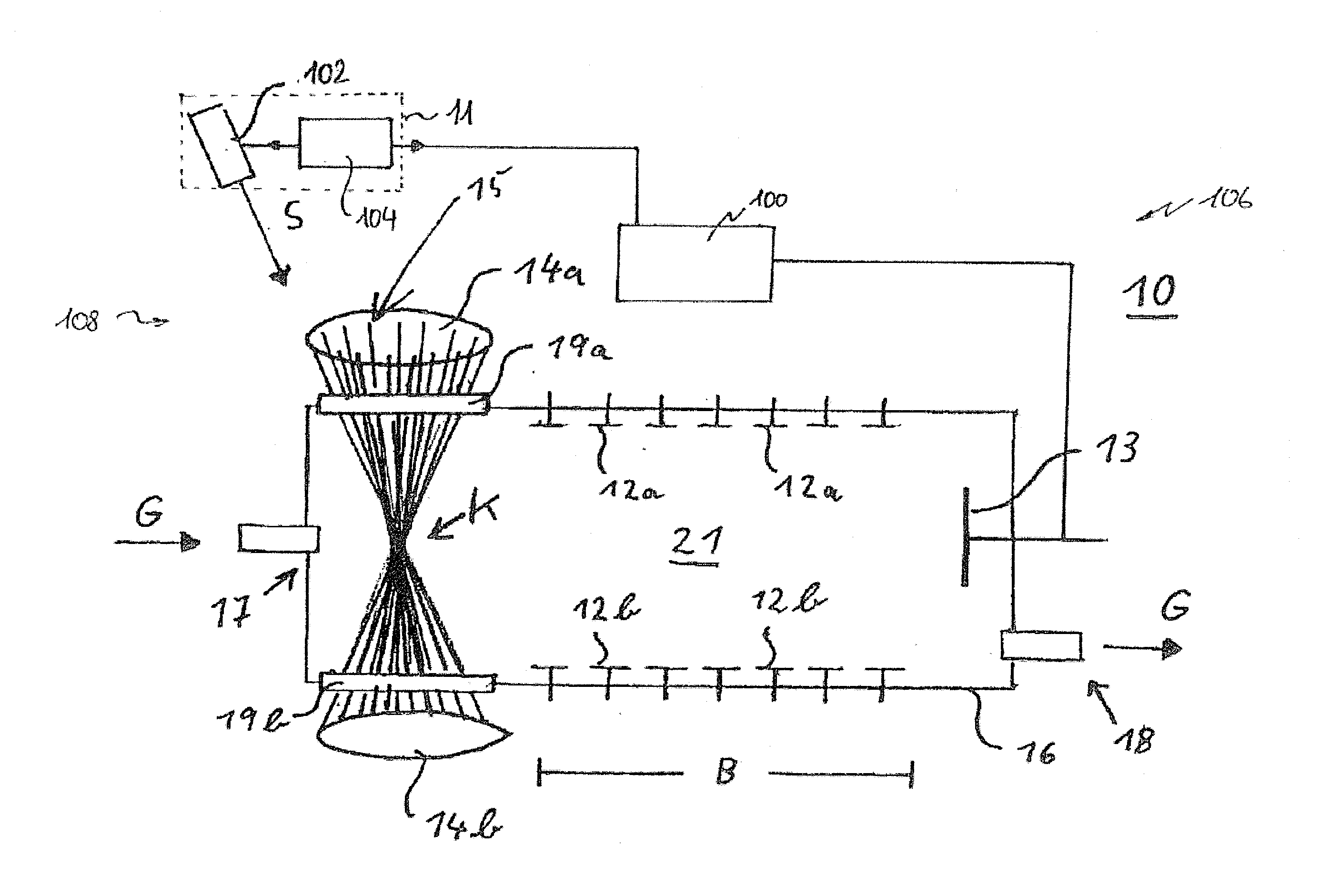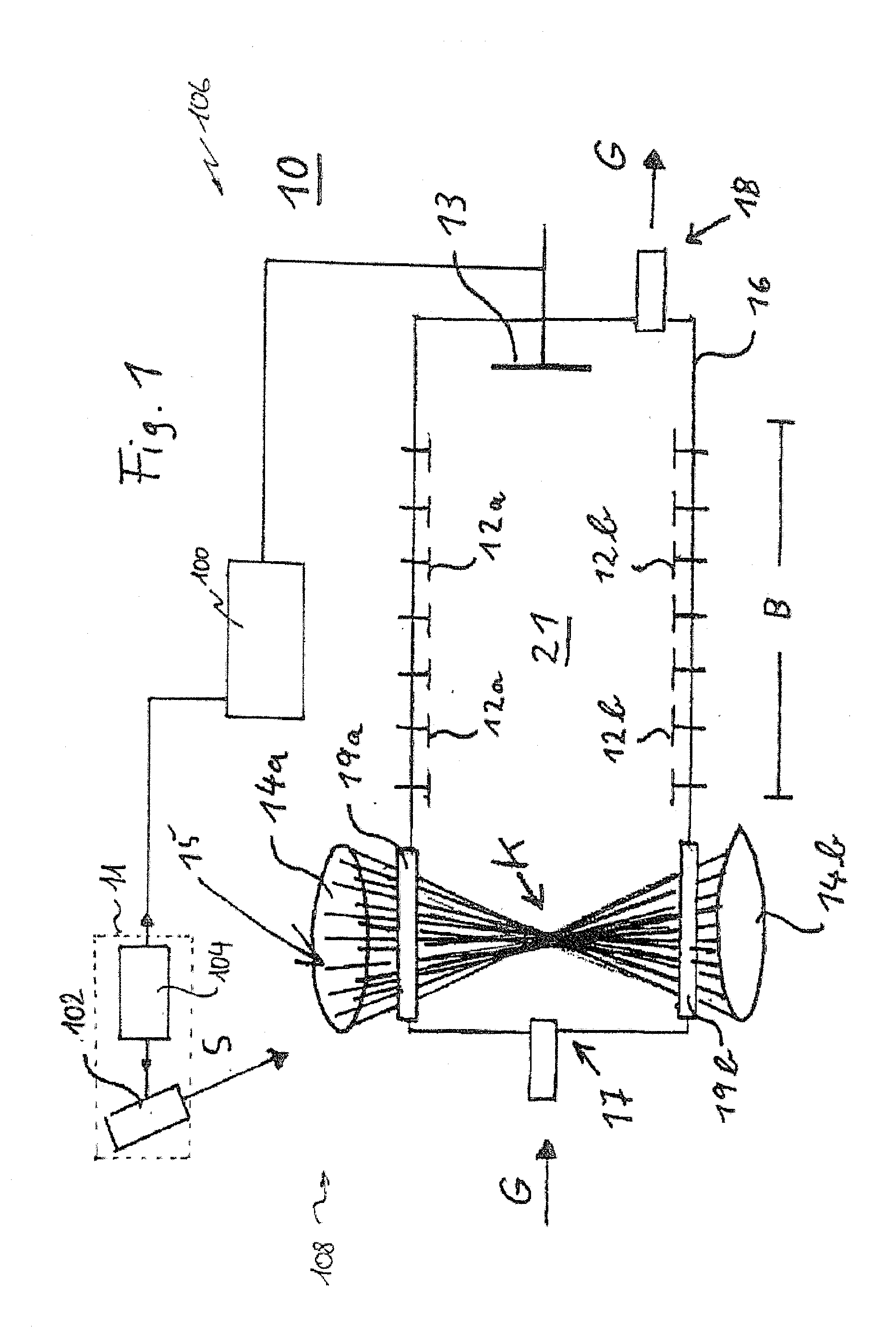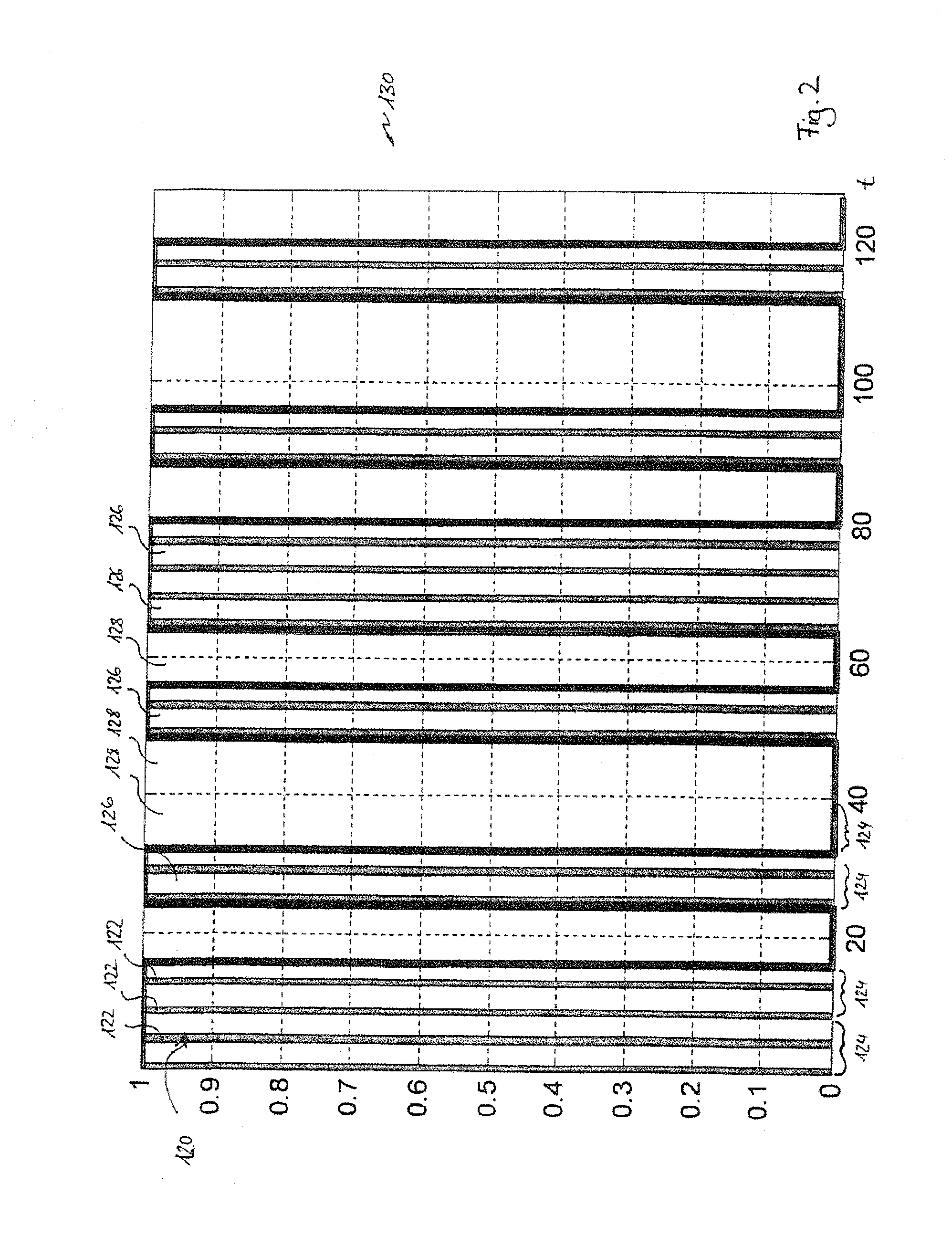Ionization Method, Ion Producing Device and Uses of the Same in Ion Mobility Spectrometry
a technology of ionization and mobility spectrometry, which is applied in the direction of mass spectrometers, isotope separation, particle separator tubes, etc., can solve the problems of difficult o-frequency, low rate, and often too long time, and achieve high repetition rate, improve the yield of analyte gas, and high rate
- Summary
- Abstract
- Description
- Claims
- Application Information
AI Technical Summary
Benefits of technology
Problems solved by technology
Method used
Image
Examples
Embodiment Construction
[0051]FIG. 1 shows a spectrometer 10 as a particularly preferred embodiment of the invention. Here, a laser 11 produces a laser beam S in the UV range so that during operation the laser beam interacts in the spectrometer 10 with a gas G to be analyzed in order to ionize substances (analytes) contained therein. An arrangement of a multiplicity of mutually opposing rows of electrodes 12a, 12b, together with a voltage source (not illustrated in the figure), forms an apparatus for producing a potential drop. As a result of the potential drop, ions entering the potential drop are accelerated. The corresponding entering ions pass through an acceleration distance B, which is formed by the opposing rows of electrodes 12a, 12b. An ion collector 13 serving to detect the produced ions is arranged at the end of the acceleration distance B. By way of example, the ion collector 13 is embodied as a separate electrode and electrically connected to a detection and / or analysis apparatus 100.
[0052]Two...
PUM
 Login to view more
Login to view more Abstract
Description
Claims
Application Information
 Login to view more
Login to view more - R&D Engineer
- R&D Manager
- IP Professional
- Industry Leading Data Capabilities
- Powerful AI technology
- Patent DNA Extraction
Browse by: Latest US Patents, China's latest patents, Technical Efficacy Thesaurus, Application Domain, Technology Topic.
© 2024 PatSnap. All rights reserved.Legal|Privacy policy|Modern Slavery Act Transparency Statement|Sitemap



